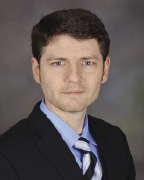These unique circumstances demand unconventional solutions. When asked to interpret the needs of users and stakeholders, we enjoy bringing our broad project experience to the table. We continue to be surprised by the myriad ways in which experience gained on one project can feed into another, despite each being wildly different. We're seeing this now during the programming of an open-plan educational space for Teachers College, where we have discovered that our work in museum and concert hall technology design applies directly to our work in educational technology.
Teachers College's Gottesman Library "Learning Theater" at Russell Hall will be an open-plan educational lab devoted to experimentation with unconventional collaboration and instructional methods. Once complete, the facility will allow its staff to construct small to medium size spaces with portable materials in a manner similar to theatrical scenery or temporary exhibition partitions. Each partition may be outfitted with high resolution displays, dedicated sound, and data network connectivity to support video recording and distance learning. Faculty and other experimenters in the Learning Theater can use the space to explore new methods of their craft. In this context, students and onlookers are considered the "audience," and the varying degree of control applied to each constructed space is gauged by its production value.
When called upon to design audiovisual support infrastructure, network connectivity, and acoustics for a space like the Learning Theater, we use our experience in performing arts and museum design, referring our clients to lessons learned on prior projects in which the very same requirements were met, bringing value from unexpected places. Our experience designing open-plan museum gallery infrastructure, influences our planning of technical grid ceilings and overhead cabling infrastructure for the Learning Theater. So too does our experience designing backstage support facilities and open-plan performance spaces for Carnegie Hall, where a similar balance is being struck between education and the audience experience.
Carnegie Hall's Studio Towers Renovation has just opened its Resnick Education Wing, part of the renovation of its backstage, administrative, and artist support spaces. The project schedule had to be closely coordinated with Carnegie Hall's concert season, causing SM&W to design temporary sound systems to extend music and paging functions in the backstage areas. This allowed Carnegie Hall's stagehand staff to continue their concert support work uninterrupted during demolition of surrounding areas. The Weill Music Room requires ample flexibility in its technology, yet must retain ease of use for non-stagehand users. Permanently installed projection screen and loudspeakers retract from the ceiling, linking to a theatrical grid for additional sound and video devices to be rigged as required.
Although Carnegie's Weill Music Room and the Russell Hall Learning Theater may share solutions in an open plan, technical ceiling grid, there is an important difference: The Learning Theater must support multiple, simultaneous yet unrelated events at a time! The acoustical implications of this are nontrivial. It is here that the Learning Theater's similarity to the Weill Music Room ends, and we find instead that our museum technology design experience becomes relevant.
At the Singapore Discovery Center, an "edutainment" center that seeks to teach the history and culture of Singapore, SM&W programmed multiple, AV-intensive exhibits across an open plan floor to minimize sound spill between exhibits. This was accomplished with careful attention to acoustical absorption, specification of loudspeaker systems which focus sound on their respective listeners, and control of exhibit locations. As in many cases, the ultimate solution lies in advisement and training of the end users, who will be responsible to rig the audio systems.
The necessity of appropriate, smart technology infrastructure has never been more evident in education. The increasing demands placed on these facilities by the advancing capabilities of consumer electronics, and the expectations of their users as a result, demand unconventional solutions at times. This affects classrooms, lecture halls, performing arts stages, medical simulation, and visual arts facilities.
Robert Badenoch is an associate principal, higher education practice area leader at Shen Milsom & Wilke, New York, N.Y.

Thanks for Reading!
You've read 1 of your 3 guest articles
Register and get instant unlimited access to all of our articles online.
Sign up is quick, easy, & FREE.
Subscription Options
Sign up is quick, easy, & FREE.
Already have an account? Login here







